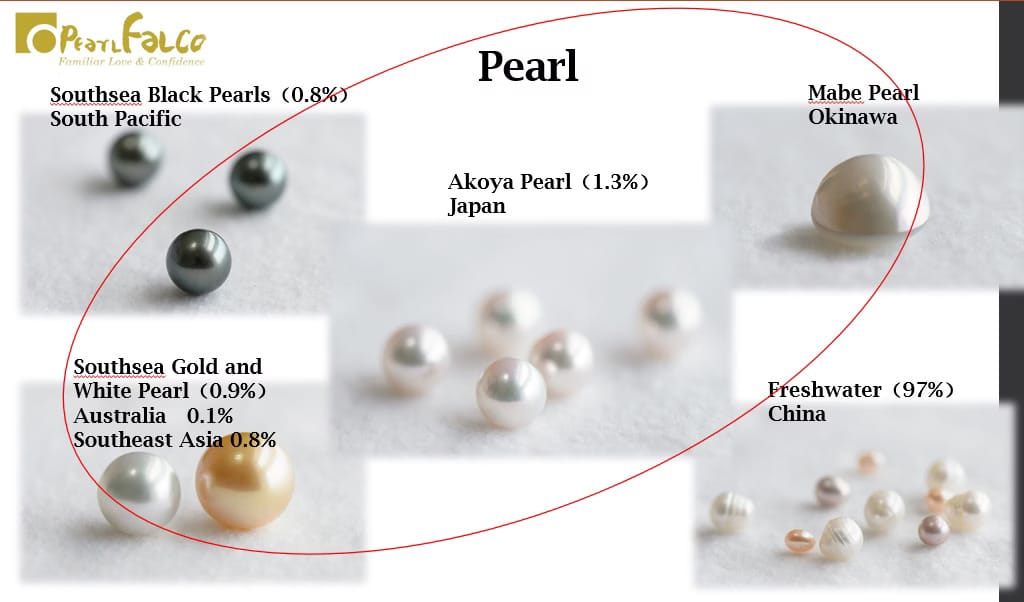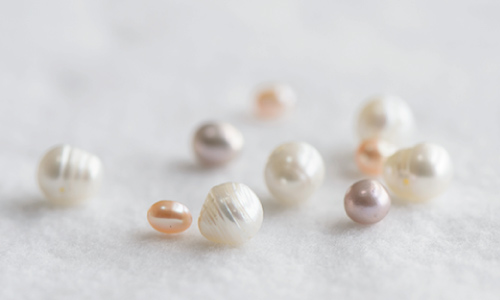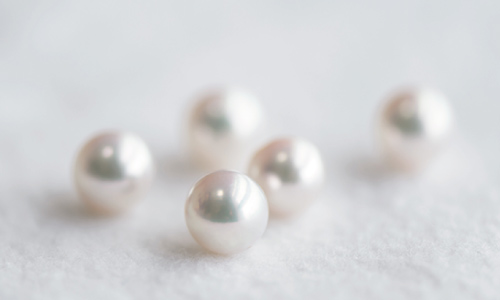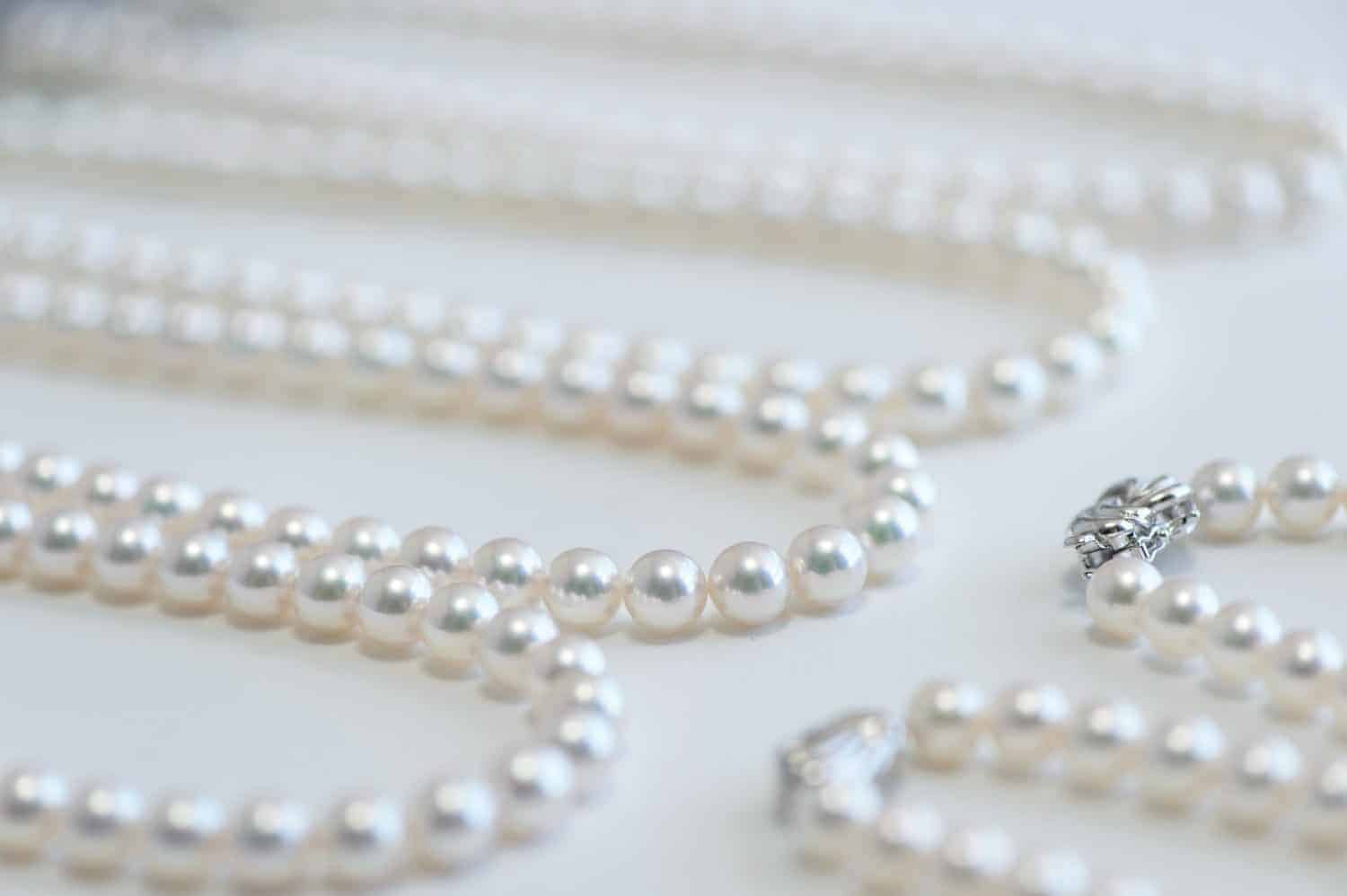
What Are Akoya Pearls and Freshwater Pearls?
When it comes to building a timeless jewelry collection, understanding the differences between Akoya pearls and freshwater pearls is essential. These two popular types of pearls offer unique beauty and charm, but their origins, luster, shapes, and prices vary significantly. Whether you’re considering an Akoya pearl necklace or freshwater pearl jewelry, this guide will help you make an informed decision that aligns with your personal style and values.
Key Differences Between Akoya Pearls and Freshwater Pearls
Akoya pearls and freshwater pearls differ not only in their origin but also in their characteristics and value. Here’s a closer look at the distinct features of each type of pearl.

Freshwater Pearls: Affordable and Abundant
Freshwater pearls are cultivated primarily in China, with production mainly occurring in lakes, ponds, and rice paddies. Freshwater mussels can produce multiple pearls at once, yielding dozens to hundreds over several harvests from a single mussel. This higher yield contributes to the affordability and accessibility of freshwater pearls. 97% Of Worldwide Pearl Production Is from Freshwater Pearls.
- Luster and Appearance: Freshwater pearls have a soft, natural luster and are available in a variety of shapes, sizes, and colors. Their natural tones often include pastels and soft hues, adding to their charm and versatility.
- Durability: While freshwater pearls are relatively affordable, the density of pearl necure tends to be lower than other seawater pearls. Over time, their color may change slightly, and they are generally less durable than seawater pearls such as Akoya pearls and Southsea pearls. However, they are still a fantastic choice for those seeking a wide range of pearl jewelry styles at accessible price points.

Japanese Akoya Pearls: Classic and Luxurious
Akoya pearls originate from seawater oysters and are primarily cultivated in the pristine waters off the coast of Japan, including regions such as Ise Shima, Ehime, and Nagasaki. They are known for their high luster, exquisite allure and round shape that set them apart as some of the most desirable pearls in the world.
- Unique Qualities of Akoya Pearls: The dense, fine, and thick nacre of Akoya pearls gives them a mirror-like luster and interference color that makes them ideal for formal settings. Their mirror-like shine is especially attractive and makes Akoya pearl necklaces a coveted choice.
Cultivation Process: Akoya oysters are delicate and require careful handling over several years, which adds to the pearls’ exclusivity. The entire process, from seeding to harvesting, can take up to 4-5 years. Due to their complex and labor-intensive cultivation, Akoya pearls are usually more expensive than freshwater pearls, making them an investment in luxury and elegance.
| Feature | Akoya Pearls | Freshwater Pearls |
|---|---|---|
| Origin | Saltwater oysters, primarily in Japan | Freshwater mussels, primarily in China |
| Size and Shape | Typically round, ranging from 2mm to 11mm | Range of shapes; can grow up to 15mm |
| Luster and Color | High, metallic luster | Softer luster with more color options |
| Price and Value | More expensive due to limited production | Budget-friendly with high availability |
How to Choose Between Akoya and Freshwater Pearls
Whether you’re seeking an investment piece or something more versatile, choosing between Akoya and freshwater pearls largely depends on your style, budget, and jewellery preferences.
The differences between freshwater and Japanese Akoya pearl necklaces go beyond geographical origin. While freshwater pearls, often produced in China, are typically more budget-friendly, Japanese Akoya pearls come with a higher price tag. This isn’t just because of their Japanese heritage; a range of other factors contribute to their unique appeal and refined elegance.
- Formal Elegance:If you’re looking for a luxurious pearl necklace with high luster and a classic round shape—something timeless to pass down with your love and memories—Japanese Akoya pearls are an ideal choice.
- Everyday Fashion Jewelry: For a budget-friendly option, freshwater pearls offer greater variety and affordability.
Embracing Sustainability in Pearl Farming
Due to global warming and a decrease in the number of local pearl farmers, Akoya pearl production has rapidly declined, currently standing at just one-tenth of its historical average. In 2019 alone, 80% of local Akoya mother oysters died as a result of climate change. Sustainable pearl farming is essential to protecting the natural environments where pearls are cultivated, especially for Akoya oysters in Japan. These sustainable practices help preserve pearls for future generations, making each piece a symbol of environmental care.

The Legacy of Akoya Pearls at Pearl FALCO
At Pearl FALCO, we are proud to uphold the tradition of producing high-quality Japanese Akoya pearls. Each piece in our Akoya pearl collection is crafted with care, from the initial stages of pearl farming to the final jewelry product. Our dedicated artisans touch each pearl thousands of times during the cleaning, grading, and setting process, ensuring that every Akoya pearl necklace, ring, or bracelet meets the highest standards of quality.
Akoya pearls are more than just jewelry—they are a lasting legacy. By choosing Akoya pearls, you are embracing a tradition of elegance and craftsmanship that can be passed down for generations. Each piece is not only beautiful but also a reminder of the enduring beauty of nature.
Caring for Your Pearl Jewelry
Both Akoya and freshwater pearls require careful handling to maintain their luster and longevity. Here are some care tips to keep your pearls looking radiant:
- Avoid Chemicals: Pearls are sensitive to chemicals found in perfumes, hairsprays, and skincare products. Apply these items before wearing your pearls.
- Clean Gently: Use a soft cloth, or sligtly damp cloth, to wipe your pearls after each wear. This helps remove oils and residues that can dull the nacre over time.
Store Properly: Store your pearls separately in a soft pouch or jewellery box to prevent scratches from other jewelry items.
Why Choose Pearl FALCO
At Pearl FALCO, we offer a curated selection of Akoya pearl jewelry that reflects the natural beauty and craftsmanship of Japanese Akoya pearls. Our commitment to quality ensures that every piece you purchase is an investment in elegance, tradition, and sustainability. Whether you’re selecting a classic pearl necklace or a modern twist on pearl jewelry, our collection provides timeless choices for every occasion.
Contact Us for Custom Jewelry Options
Shop Pearl FALCO’s Exclusive Akoya Collection

